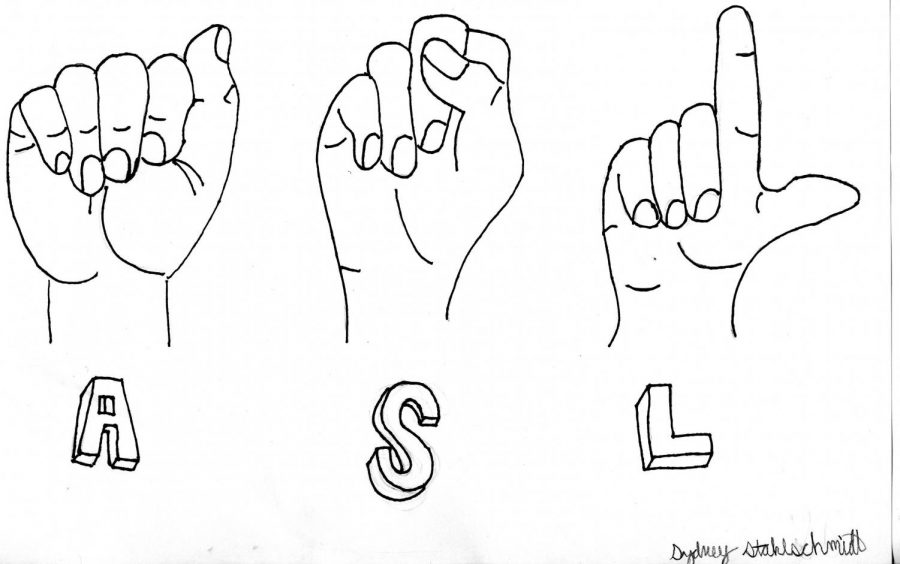Sign Language Coming to Parkway Schools
February 12, 2018
“ASL bridges the communication gap between deaf and hearing people and is currently the third most used language in the United States,” Parkway West ASL (American Sign Language teacher Tiffani Simmons said.
There are many people around the world who have a loss of hearing. In Missouri alone, 60,000 people are hearing impaired.
To meet this demand, Parkway Schools decided to make an online virtual ASL class. According to Amy Belding, Parkway’s modern and classical language coordinator, there has been a huge increase in students enrolling in and requesting for ASL classes.
Parkway thought this would be a great way for students to learn more about the sign language culture and for another unique language to take to increase knowledge and complete college language requirements.
Lecturer in Audiology and Communication services at Washington University, Justine Preston, said this course will not only teach students the language of ASL but will help with the real world environment.
“Those learning ASL will become more attuned to others’ facial expressions and body language, as well as looking for actual signing,” Preston said.
A sign language course might also provide a bigger comfort for deaf peers in a school environment.
“For some students who know ASL or are deaf, it might provide them with a sense of community, in that some of their peers are learning about an important part of their everyday lives, and respecting it as a valued language,” Director of Deaf Education Studies and Associate Professor of Otolaryngology at Washington University, Heather Hayes said.
However, while Hayes and Preston think that this is a very important course to be teaching at a public school, the online aspect may not be as beneficial for the learning of the overall aspect of ASL.
“My first instinct is that online is a little less desirable. A teacher in a classroom is able to walk around and see what each student is doing and correct their hand movements or show them signs from several angles,” Preston said.
According to Preston and Hayes, ASL culture is equally important for students to study and understand. With all languages to fully understand the language you are learning, you have to know the culture behind all of it. Preston said before working with deaf students, she never would have known about their unique behaviors, beliefs, and more, that are different from those of the hearing.
This course will not be much different from learning a language like Spanish, French, or German. No matter what, when learning a new language their will always be difficulties, because you are not experienced in the history of that language, Parkway Central French teacher, Lori Turnage said.
“Taking any language allows students to reflect on how messages are communicated. Words are important no matter verbal or not. They also learn about the people who use the language, and learn about themselves and beliefs in the process,” Turnage said.
While only an online option currently for almost all Parkway schools, Parkway West offers a face-to-face class. Mostly, because West has the largest amount of the deaf population of students in Parkway at their school, but if the popularity of this course continuously grows they will most likely consider making an in person class district-wide.
According to most of the counselors not many students are considering taking the class so far. However, there are students who would be interested in learning more or are curious about the ASL culture.
“Hearing there would be a sign language course I immediately thought I wanted to do it because I think it would be an interesting language to learn,” freshman Kaylee Canoy said.
While sign language is an extremely popular and largely used language, it is not universal. They have hundreds of different dialects around the world. There are also many other unique traits that separate ASL from other languages.
“It is visual, not spoken, and their is no written form. It even has its own grammar and syntax. But it does focus on expressive production just like other world wide languages,” Simmons said.


